Court of Justice: http://curia.europa.eu
European General Court: http://curia.europa.eu
Directory
of EU Law: http://europa.eu/index_en.htm Internet Resources
FindSlide.org - это сайт презентаций, докладов, шаблонов в формате PowerPoint.
Email: Нажмите что бы посмотреть


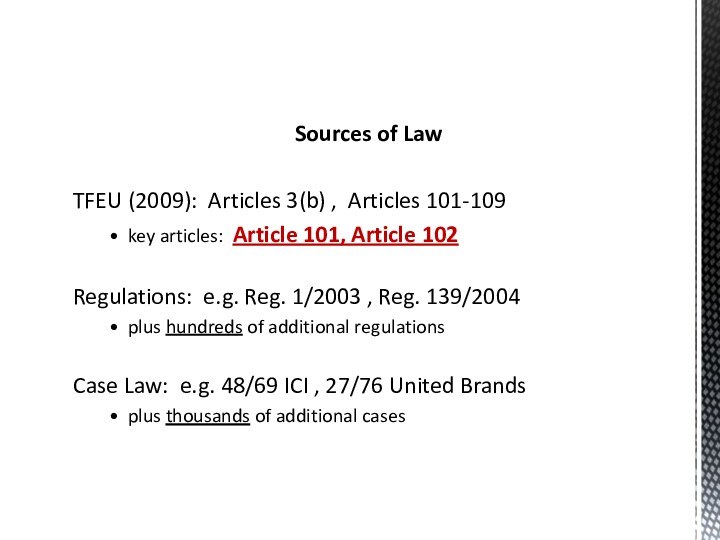

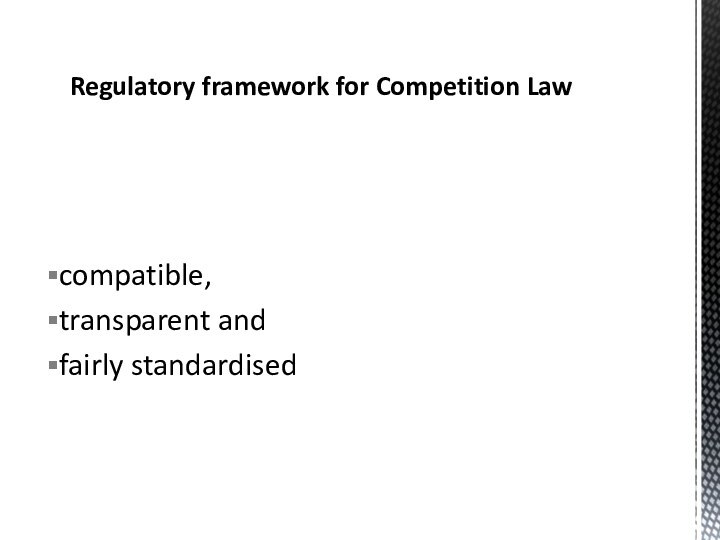

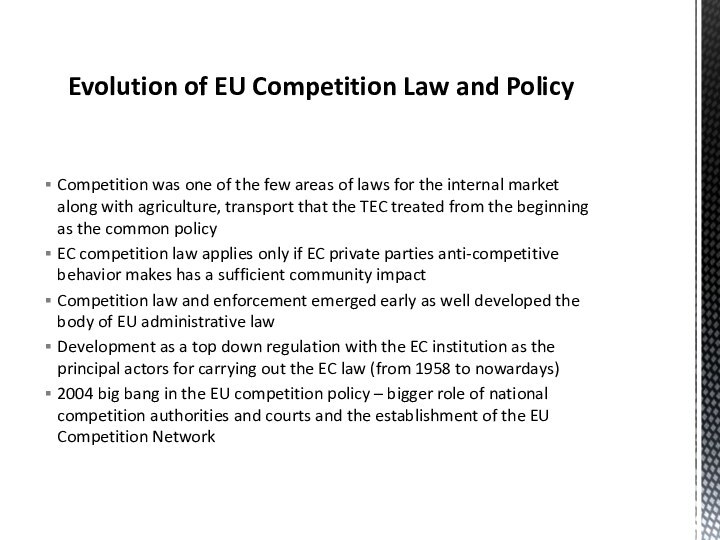


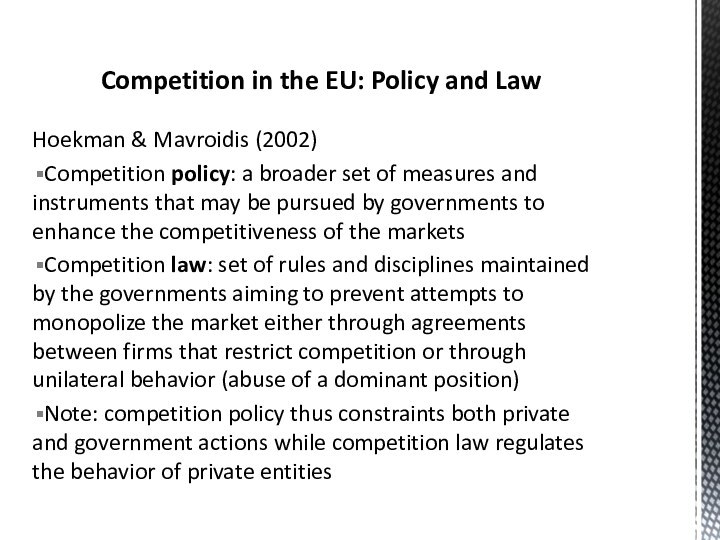



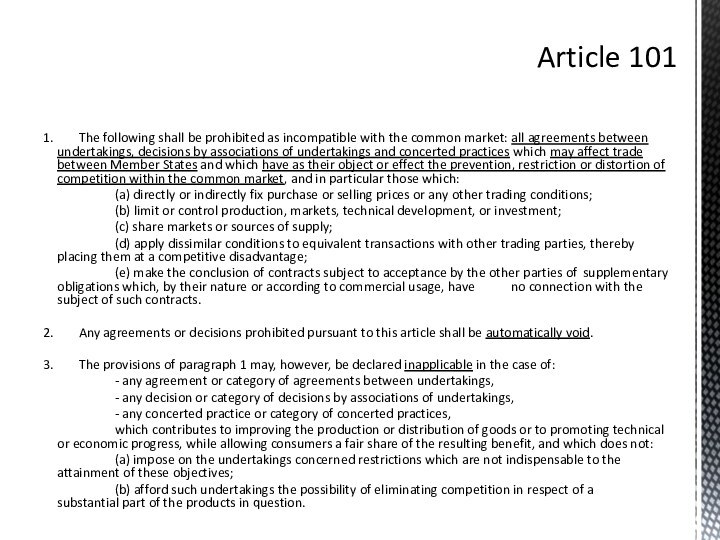
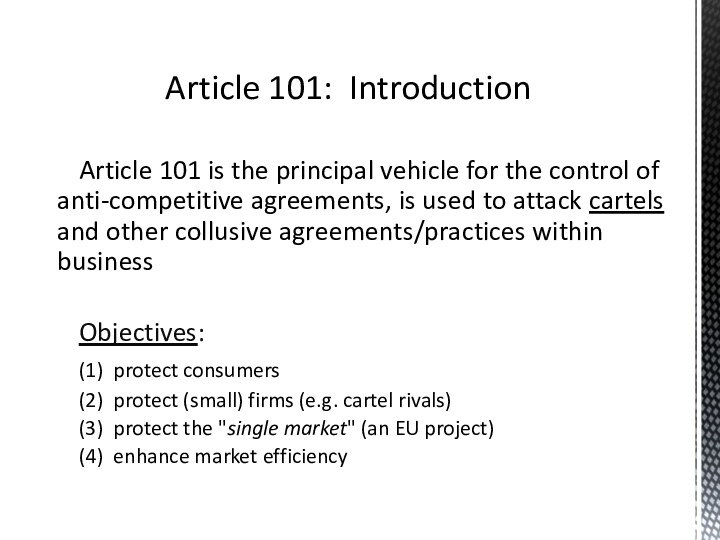







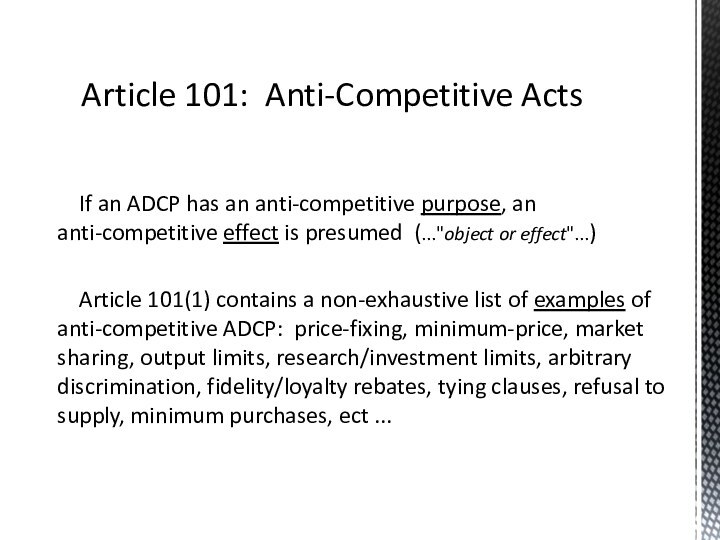
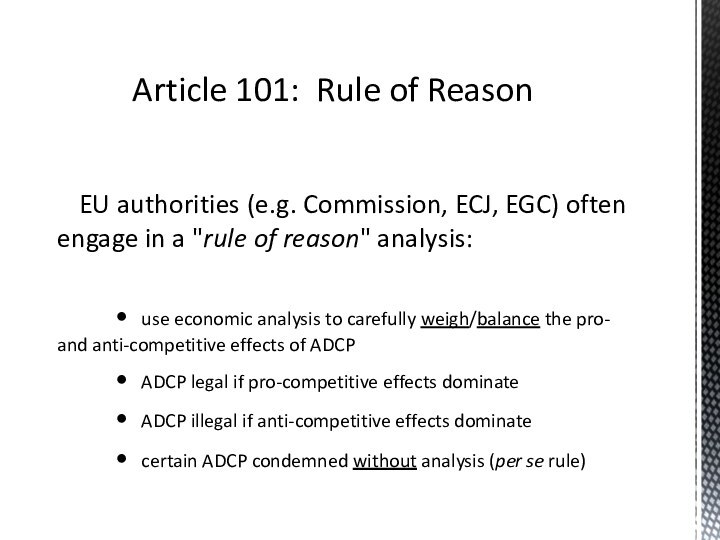
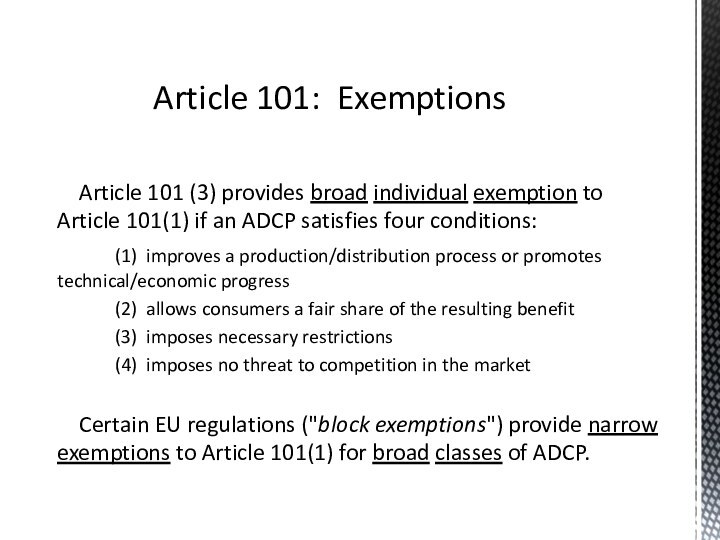


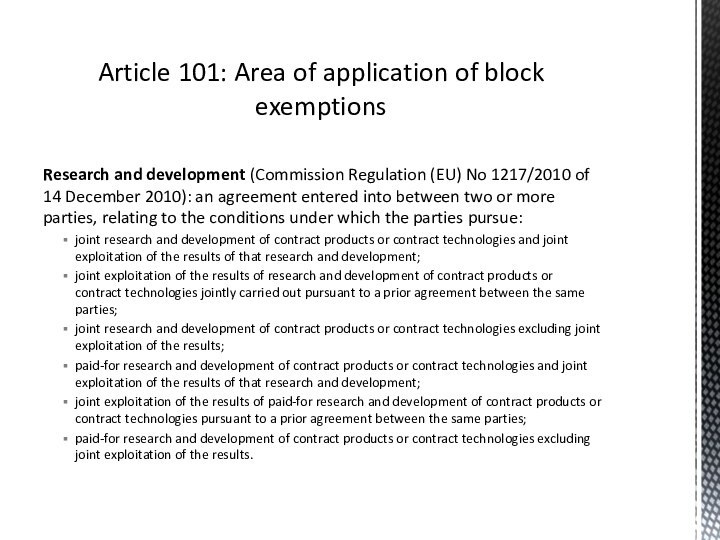
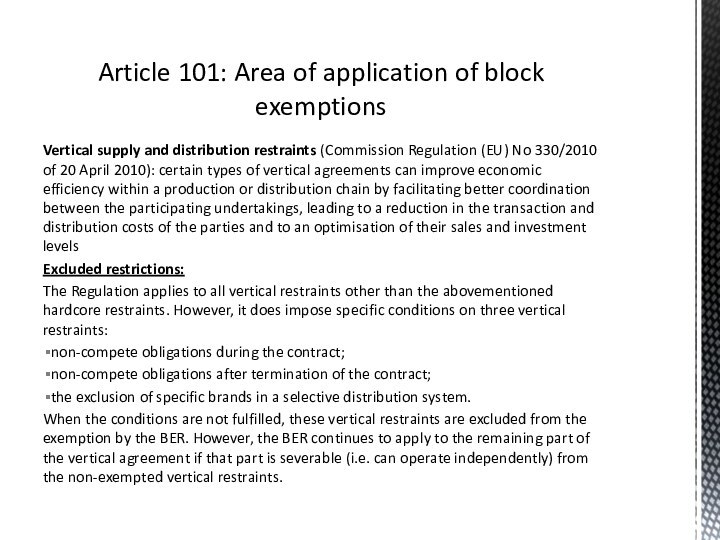
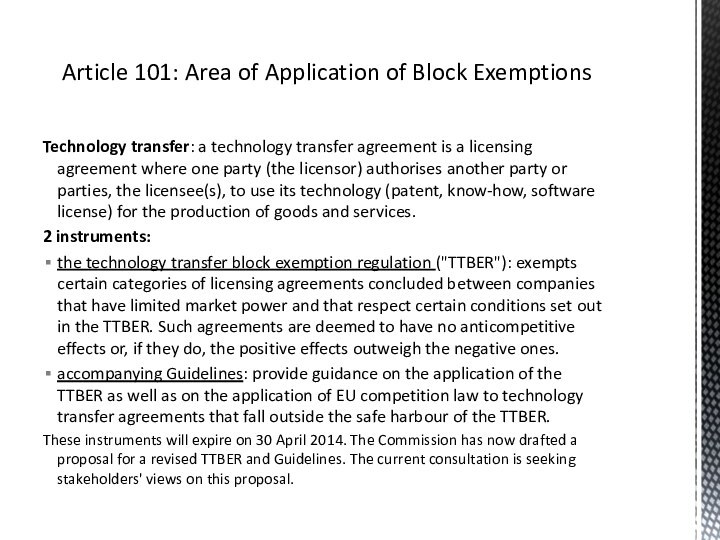


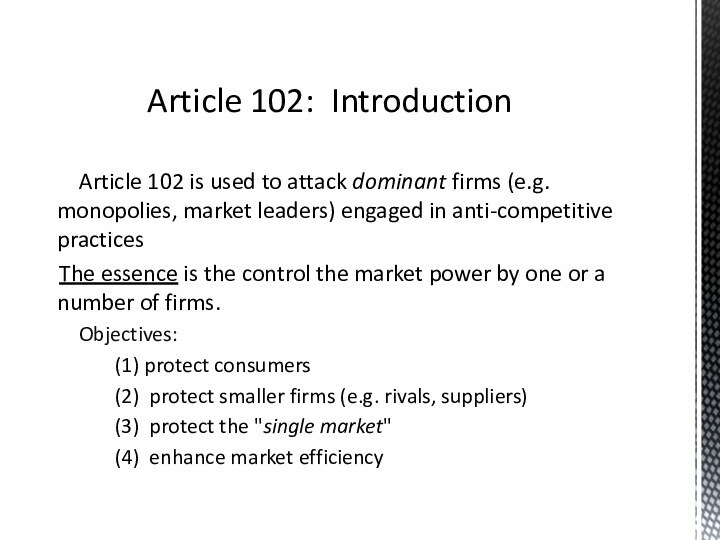

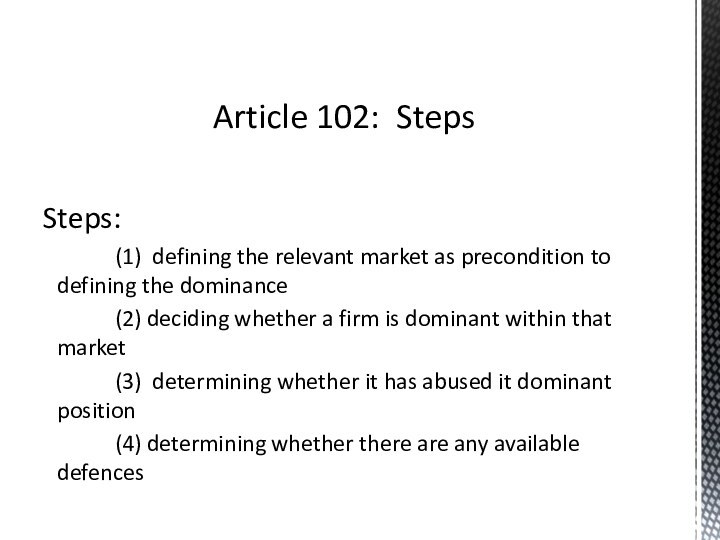

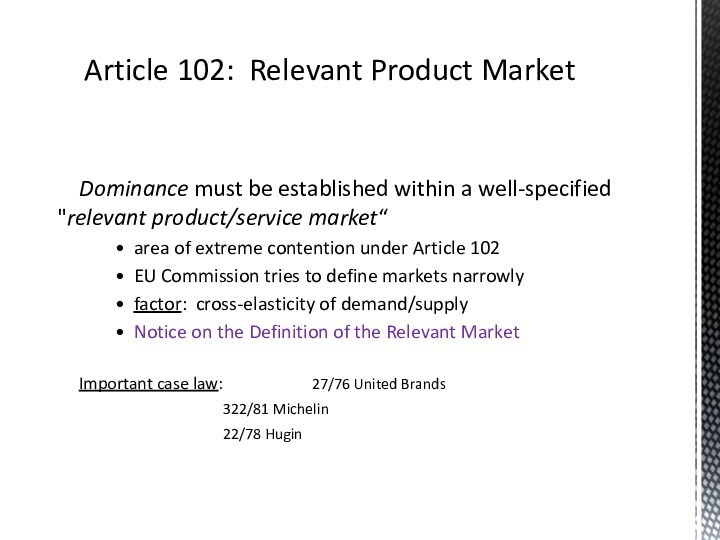

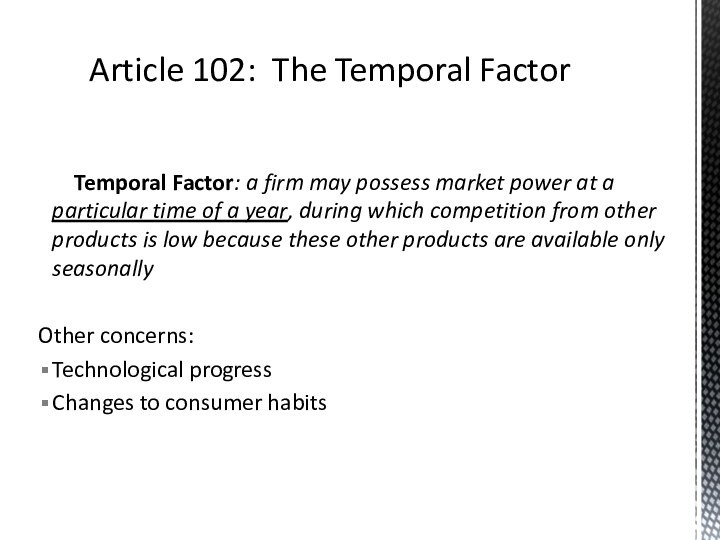
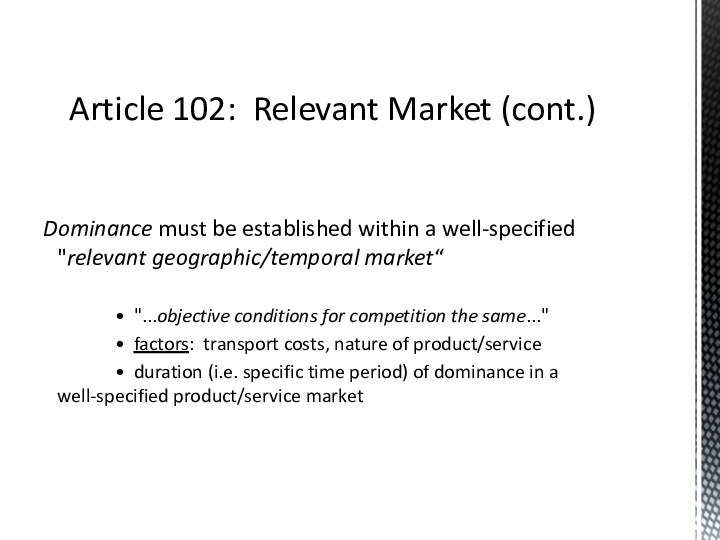
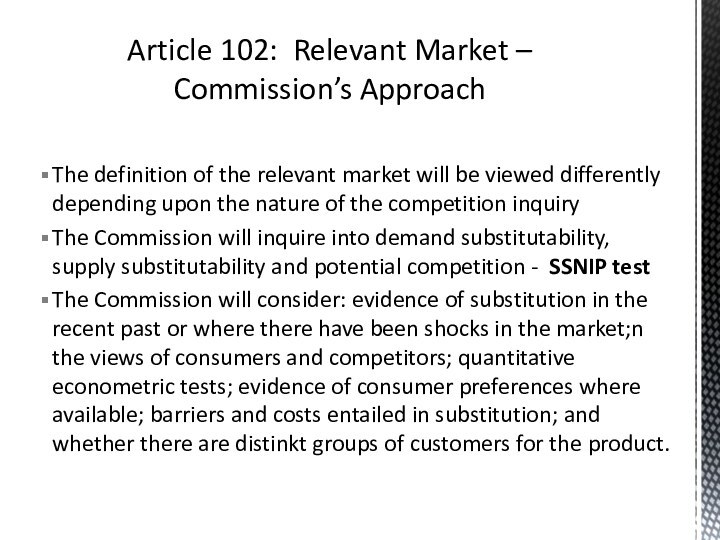





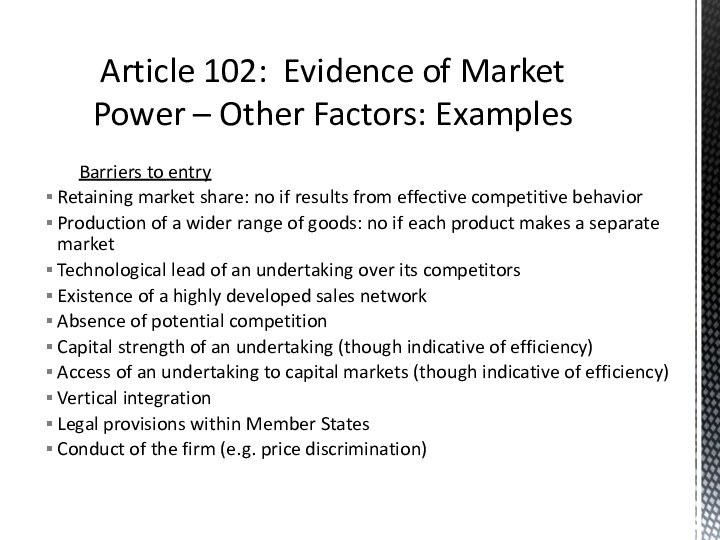
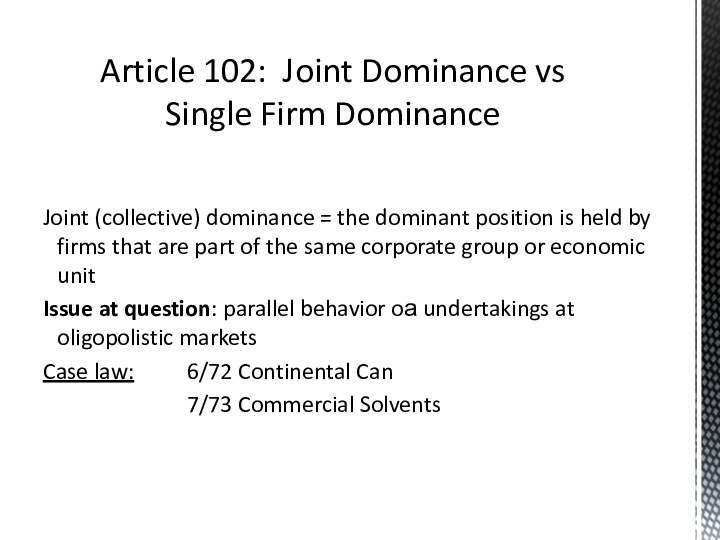

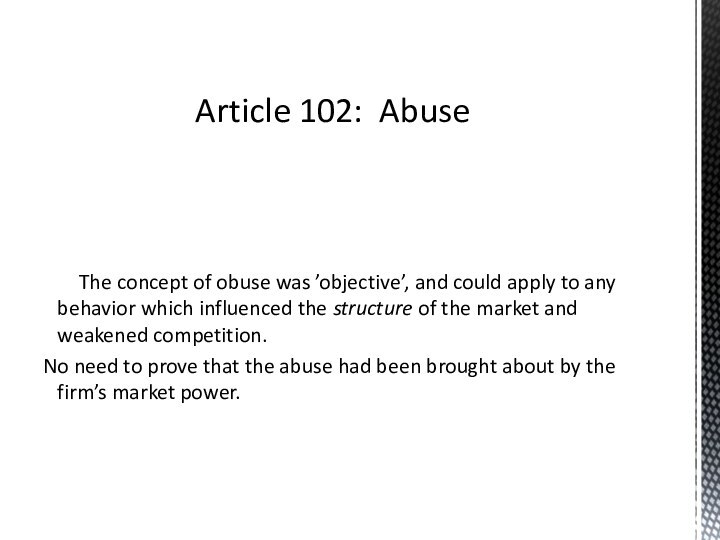




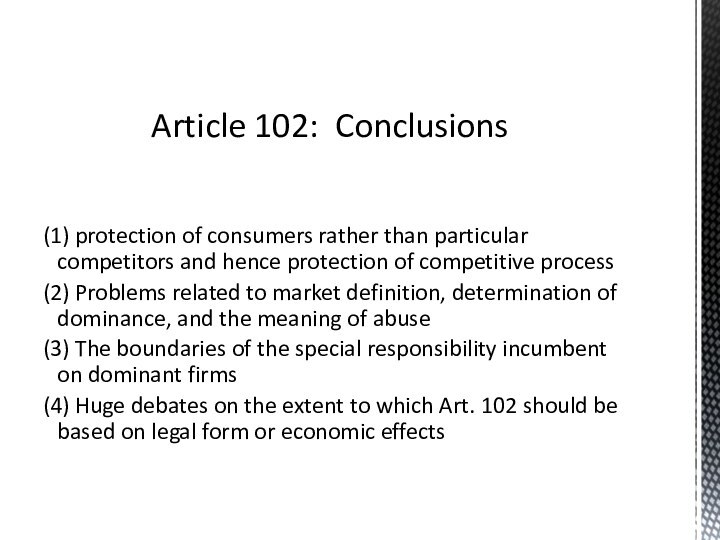
Internet Resources
Mission of the European Commission on competition issues
Phases of EU Competition Policy development
Evolution of EU Competition Law and Policy
Introduction
Pillars of the EU Competition Policy
Competition in the EU: Policy and Law
Trade Policy & Competition Policy
Objectives of EU Competition Policy and Law
Summary of EU Competition Law Concepts
Article 101
Article 101: Introduction
Article 101: General Scheme
Article 101: key features
Article 101: Key Terminology
Article 101: Effect on Trade
Article 101 (1): the de minimis doctrine
Criterion of application of de minimis doctrine
Article 101: Anti-Competitive Acts
Article 101: Rule of Reason
Article 101: Exemptions
Article 101: Block Exemptions
Article 101: Area of application of block exemptions
Article 101: Area of application of block exemptions
Article 101: Area of application of block exemptions
Article 101: Area of Application of Block Exemptions
Article 101: The Black List
Article 102
Article 102: Introduction
Article 102: General Scheme
Article 102: Steps
Article 102: Relevant Product Market
Article 102: Relevant Geographic Market
Article 102: The Temporal Factor
Article 102: Relevant Market (cont.)
Article 102: Relevant Market – Commission’s Approach
Article 102: Dominance Principle
Article 102: Dominant Position = Market Power
Article 102: Evidence of Market Power
Article 102: Evidence of Market Power – Market Share
Article 102: Evidence of Market Power – Other Factors
Article 102: Evidence of Market Power – Other Factors: Examples
Article 102: Joint Dominance vs Single Firm Dominance
Article 102: Anti-Competitive Acts
Article 102: Abuse
Article 102: Abuse – Problems with Interpretation
Article 102: Abuse – Particular Examples
Article 102: Effect on Trade